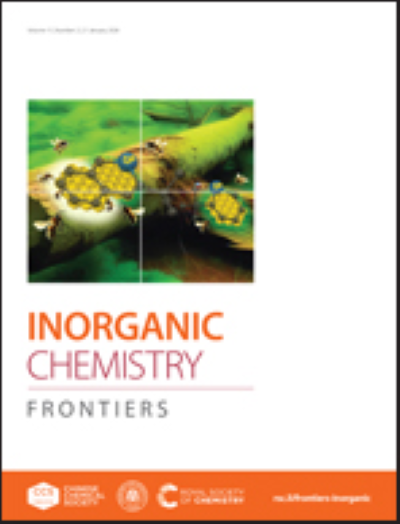The complexation and solvent extraction properties of a phenanthroline diamide extractant for trivalent actinide and lanthanide ions
IF 6.1
1区 化学
Q1 CHEMISTRY, INORGANIC & NUCLEAR
引用次数: 0
Abstract
Characterization of trivalent actinide (An(III)) chemistry with nitrogen and oxygen donor (N,O-donor) extractants is relevant to closing the nuclear fuel cycle. In general the extraction of transplutonium actinides has not been extensively explored, but is essential to fundamental chemical understanding and separation schemes. A popular N,O-donor extractant, phenanthroline diamide (DAPhen), has incurred interest for f-element separations due to numerous positive qualities as an extractant. DAPhen ligands are stable in molar concentrated acids and have a pre-organized binding mode that encourages faster complexation. Additionally, the amide moieties can be functionalized to tune interactions between metals and ligands. In this work, solvent extraction experiments were completed using a derivative of the DAPhen extractant in nitrobenzene that revealed selectivity for multiple An(III) (An = Am, Cm, Bk, Cf) metals in comparison to Eu(III). The extraction of all surveyed An(III) cations was effective. Surprisingly, the degree to which each An(III) cation was extracted was not periodic. Extraction was most effective for Am(III), intermediate for Cf(III) and Bk(III), and lowest for Cm(III). To provide additional insight into the extraction process, we characterized the corrdiantion chemistry between Am(III) and numerous Ln(III) cations (Pr(III), Nd(III), Tb(III), Lu(III)) with TEtDAPhen. Lanthanide speciation and stability constants were measured using UV-Visible spectroscopy for multiple Ln(III) metals (Nd(III), Eu(III), Gd(III)). Those experiments showed increasing stability constants from Nd(III) – Gd(III) and that the metal-to-ligand stoichiometry was one-to-one. Consistent with that interpretation were single crystal X-ray crystallography studies on M(TEtDAPhen)(NO3)3 complexes.邻菲罗啉二胺萃取剂对三价锕系和镧系离子的络合和萃取性能
用氮氧给体(N, o给体)萃取剂表征三价锕系元素(An(III))的化学性质与关闭核燃料循环有关。一般来说,尚未对跨钚锕系元素的提取进行广泛的探索,但对基本的化学理解和分离方案是必不可少的。一种流行的N, o供体萃取剂,邻菲罗啉二胺(phenanthroline diamide, dapen),由于作为萃取剂具有许多积极的特性,引起了人们对f元素分离的兴趣。dapen配体在摩尔浓酸中是稳定的,并且具有预先组织的结合模式,促进更快的络合。此外,酰胺部分可以被功能化以调节金属和配体之间的相互作用。在这项工作中,溶剂萃取实验是使用dapen萃取剂的衍生物在硝基苯中完成的,与Eu(III)相比,该萃取剂对多种An(III) (An = Am, Cm, Bk, Cf)金属有选择性。所测An(III)阳离子提取效果良好。令人惊讶的是,每个An(III)阳离子的提取程度并不是周期性的。提取Am(III)最有效,中间提取Cf(III)和Bk(III),最低提取Cm(III)。为了进一步了解提取过程,我们用tetdapen表征了Am(III)和许多Ln(III)阳离子(Pr(III), Nd(III), Tb(III), Lu(III))之间的协同化学反应。用紫外可见光谱法测定了多种Ln(III)金属(Nd(III), Eu(III), Gd(III))的镧系元素形态和稳定性常数。这些实验表明Nd(III) - Gd(III)的稳定性常数增加,金属与配体的化学计量是一对一的。与这一解释一致的是M(tetdapen)(NO3)3配合物的单晶x射线晶体学研究。
本文章由计算机程序翻译,如有差异,请以英文原文为准。
求助全文
约1分钟内获得全文
求助全文
来源期刊

Inorganic Chemistry Frontiers
CHEMISTRY, INORGANIC & NUCLEAR-
CiteScore
10.40
自引率
7.10%
发文量
587
审稿时长
1.2 months
期刊介绍:
The international, high quality journal for interdisciplinary research between inorganic chemistry and related subjects
 求助内容:
求助内容: 应助结果提醒方式:
应助结果提醒方式:


